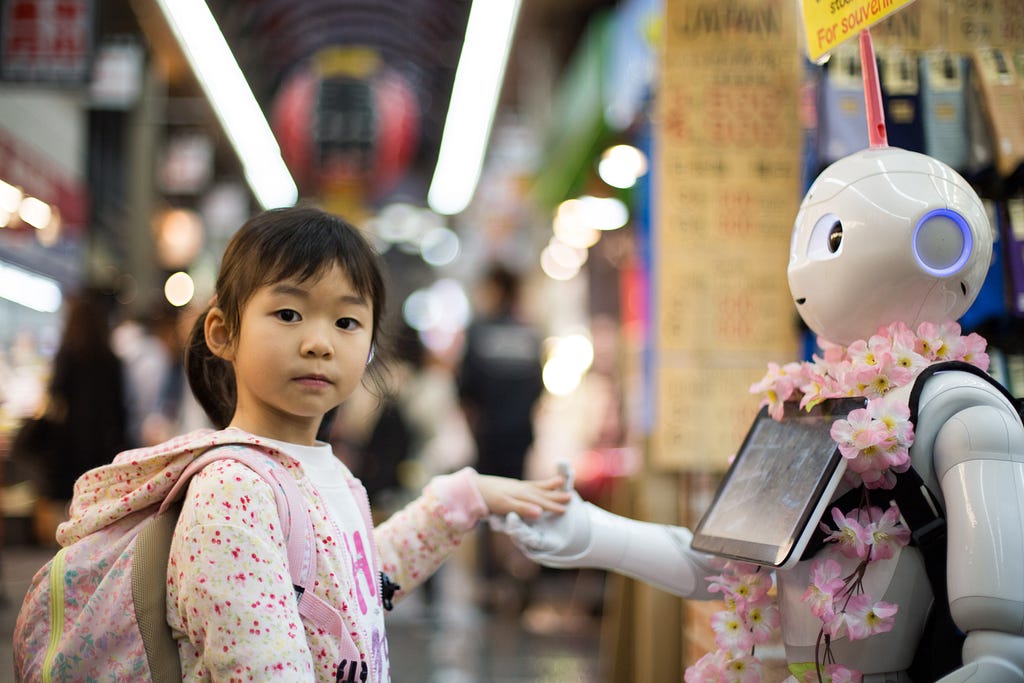Are threats to global education driven by AI or human factors?

As Artificial Intelligence (AI) continues to gain ground in education, the question arises: is AI the hero we’re looking for, or does it pose a potential threat to the future of learning?
It’s a captivating subject, given the paramount importance of education throughout human life, from the cradle to the grave. Interestingly, a multitude of articles, videos, and workshops have delved into this topic, with discussions going back even several years before AI became a buzzword, particularly gaining prominence in the wake of the COVID-19 pandemic.
AI’s Historical Roots

Beneath this exploration lies a significant truth that AI’s origins trace back to as early as 1950 when the eminent British mathematician, logician, and computer scientist Alan Turing came into existence. Turing is credited for his revolutionary achievements, which opened the door to contemporary computing and artificial intelligence.
The fundamental component of the Turing Test is an “imitation game” in which a human judge converses with both a fellow human and an unidentified machine. If indistinguishable responses win, it can be concluded that the computer can mimic intelligence on par with that of humans.
Alan Turing’s pioneering work laid the groundwork for AI research, raising important questions about machine intelligence, cognitive processes, and the latent potential of machines to mirror human-like thought patterns. Although his paper initially introduced the Turing Test, it delves further into the deep philosophical implications of machine intelligence, thereby sparking contemplation about the essence of consciousness, creativity, and the capacity for machine learning. The Turing Test story was even adapted into a film in 2014 starring Benedict Cumberbatch.
Turing goes beyond mere enigmas, embodying the spirit of an AI philosopher, exploring the question of machines imitating human cognitive abilities. The Turing test is not just a parlor trick, but a cornerstone idea in the broad field of AI — a litmus for human-machine intelligence equivalence.
In the context of education, AI emerged as a silent companion amidst the cacophony of the pandemic. In an era of disruption, technology rushed to fill the void left by traditional classrooms. However, AI went beyond mere substitution; it brought with it the promise of transformation. So, let’s get comfortable — we’re about to take a plunge into the AI rabbit hole!
AI in Global Education
Education had to confront its consequences as the pandemic spread across the globe. But AI sprang as a ray of hope from the ashes of hardship. Stanford University is a shining example, where AI aids deaf students through real-time transcription. Numerous efforts and research endeavors pertaining to the use of AI in education have been undertaken at Stanford University.
One of the prominent events in recent years was the launch of the Stanford Institute for Human-Centered Artificial Intelligence (HAI) in 2019. HAI aims to advance AI research, education, policies and practices to benefit humanity. The conference brings together experts from various fields to tackle the global challenges posed by AI and ensure its responsible and ethical development. Their AI Lab and Computer Science department have likely been key players in these efforts. They have explored how AI can enhance learning experiences, adapt to individual student needs, and optimize educational content delivery.
In the cradle of innovation, Stanford’s proximity to Silicon Valley fosters an ecosystem where academia and industry converge. Tech giants and startups alike collaborate closely with Stanford’s community, nurturing an environment rich in innovation and exploration.
AI in Indonesia: Catalyst for Transformation
For a sprawling archipelago like Indonesia, accessibility remains a critical challenge in education. AI stands as a potential equalizer, transcending geographical barriers to democratize learning. Envision an AI-driven bridge, extending its reach to the farthest corners of the nation. However, the path to integration is not without obstacles.
worldbank 2020
Indonesia’s journey with AI in education has seen significant strides in recent years. The attractiveness of AI’s potential to individualize learning experiences and enhance educational outcomes has driven a number of initiatives. An example is the collaboration between the Indonesian Ministry of Education and Culture and Microsoft, which has resulted in the implementation of AI-powered solutions to assist teachers and students alike. These tools offer personalized learning pathways, facilitate real-time feedback, and help address the challenges of a diverse and expansive educational system.
While innovation brings promise, it also brings the need for careful consideration. The integration of AI faces challenges, from ensuring equitable access across diverse communities to addressing data privacy and security concerns. AI’s potential is immense, but its responsible deployment requires a multifaceted approach.
AI and technology innovation can play an important role as a catalyst in transforming education in Indonesia to be more inclusive, personalized and effective.
Education with AI: The Opportunities and Challenges
So, can AI really replace humans? or educator in specific? The symbiotic relationship between AI and educators underscores a crucial message: AI is an enhancement, not a replacement. AI empowers educators with real-time insights, fostering personalized attention. From the historical backdrop to contemporary transformations, a mosaic of opportunities and challenges emerges in the AI-education narrative.
Opportunities
- Personalized Learning Paths: AI can help match content and pace, increase engagement, and meet a variety of personalized learning needs.
- Enhanced Teacher Support: AI can help teachers by automating assignments, providing insights, and suggesting effective strategies for each student and situation.
- Language Learning and Translation: AI breaks language barriers, enabling access to content in native languages.
- Remote Learning: AI can help create interactive virtual classrooms, crucial for expansive regions like Indonesia.
- Data-Driven Insights: AI informs data-driven insights and assists from policy decision-making to curriculum development.
Challenges
- Equity and Access: AI can amplify inequalities, excluding communities with limited access.
- Data Privacy: Ensuring data privacy and security in AI-driven education is paramount.
- Teacher Training: Adequate training is vital for educators to effectively integrate AI.
- Ethical Considerations: Bias in AI algorithms can perpetuate inequalities.
- Dependency on Technology: Striking a balance between AI and essential human skills is a challenge.
Navigating these challenges is pivotal for harnessing the benefits of AI in education while minimizing potential adverse effects. This journey demands meticulous planning, robust collaboration among stakeholders, and an unwavering commitment to cultivating an inclusive and ethical AI-enhanced learning environment.
In the realm of AI in education, frameworks such as the World Economic Forum’s “21st Century Skills for All” advocate for the integration of AI to cultivate critical thinking, creativity, and problem-solving skills among students. This alignment of education with the evolving demands of the modern world provides a wealth of insights and best practices that can serve as a guiding beacon for countries like Indonesia. These countries, as they aspire to implement AI in their education systems, can adapt and tailor these approaches to their unique contexts. This adaptation empowers Indonesia to harness the potential of AI in bridging educational gaps, enriching learning experiences, and aptly preparing students for the challenges and opportunities of the future.
In summary, these frameworks and initiatives offer a repository of wisdom that can serve as a valuable reference for countries venturing into the realm of AI in education. By thoughtfully adapting these strategies to the local landscape, Indonesia can seize the transformative potential of AI, ensuring that education remains a beacon of progress and growth for generations to come.
As we stand at the threshold of transformation, AI represents a vessel of change. Indonesia’s vision for AI in education is a vision of boundless potential. While the road ahead may be marked with challenges, the promise of a future where knowledge is limitless and every student’s potential is unlocked remains within reach.
The question of whether AI will emerge as a savior or a threat for future learning hinges upon the choices we make as humans. The opportunities and challenges presented by AI in education offer us a compass. With careful consideration, collaboration, and an unwavering commitment to an inclusive and ethical approach, AI can undoubtedly be a guiding light, illuminating the path toward enhanced education and holistic learning experiences.
In the hands of insightful educators, policymakers, and innovators, AI holds the promise of reshaping education into a realm where students thrive, teachers flourish, and the boundaries of possibility are forever expanded. As Indonesia and the world embrace the transformative power of AI, the trajectory of future learning rests in our hands. It is through our collective wisdom that we’ll navigate the intricate tapestry of AI’s impact on education and craft a narrative where AI is not just a tool, but a harmonious extension of the human pursuit of knowledge.
Sources
Worldbank- Indonesia’s education during covid-19
WEF’s 21st century framework
21st century skills
Alan Turing — Imitation Game
Turing Test
Standford AI Lab
Government’s partnership info
UNESCO as references to opportunities & challenges of AI in education
References to opportunities and challenges of AI in education
etc
disclaimer of article: this is just my point of view based on some research on articles, news, videos and books. Hope it is useful
AI in education: a savior or a threat? was originally published in UX Collective on Medium, where people are continuing the conversation by highlighting and responding to this story.